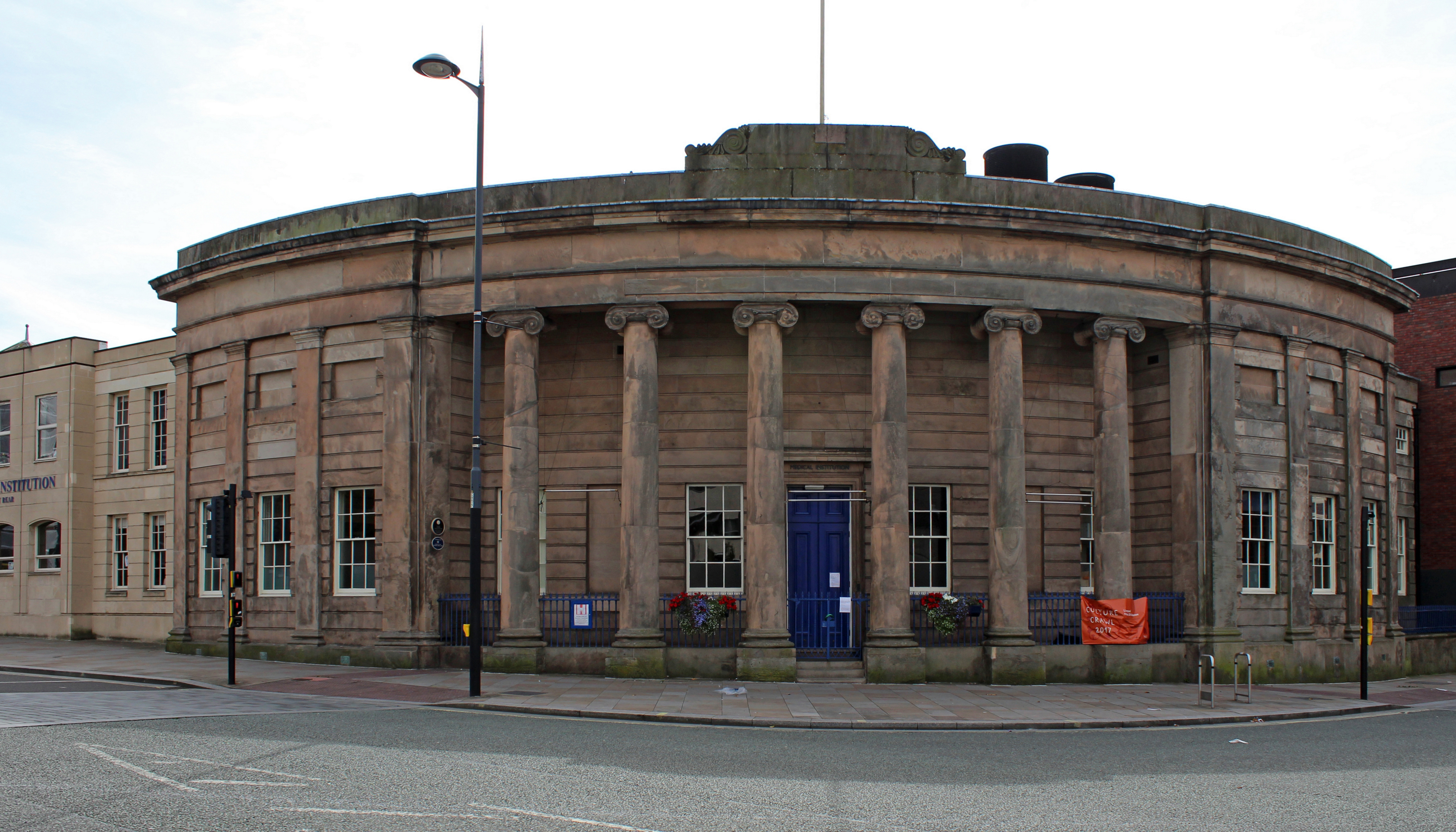Clark Rampling on:
[Wikipedia]
[Google]
[Amazon]
 Clark Rampling (bapt 6 April 1793 – buried 7 March 1875) was an English architect who worked from offices in London and from about 1820 in
Clark Rampling (bapt 6 April 1793 – buried 7 March 1875) was an English architect who worked from offices in London and from about 1820 in
 Clark Rampling (bapt 6 April 1793 – buried 7 March 1875) was an English architect who worked from offices in London and from about 1820 in
Clark Rampling (bapt 6 April 1793 – buried 7 March 1875) was an English architect who worked from offices in London and from about 1820 in Birkenhead
Birkenhead (; cy, Penbedw) is a town in the Metropolitan Borough of Wirral, Merseyside, England; historically, it was part of Cheshire until 1974. The town is on the Wirral Peninsula, along the south bank of the River Mersey, opposite Liver ...
, Cheshire
Cheshire ( ) is a ceremonial and historic county in North West England, bordered by Wales to the west, Merseyside and Greater Manchester to the north, Derbyshire to the east, and Staffordshire and Shropshire to the south. Cheshire's county t ...
(now in Merseyside
Merseyside ( ) is a metropolitan county, metropolitan and ceremonial counties of England, ceremonial county in North West England, with a population of List of ceremonial counties of England, 1.38 million. It encompasses both banks of the Merse ...
). By 1841 he was joined in partnership in Birkenhead by his nephew Robert Bushell Rampling and the practice was known as C. and R. B. Rampling.
His best known work is the Liverpool Medical Institution
The Liverpool Medical Institution is a historic medical organisation based in Liverpool, United Kingdom. Its building on the corner of Mount Pleasant and Hope Street was opened in 1837, but the site has been used as a medical library since 1779. ...
, which was built in 1835–37 in Neoclassical style. This building is recorded in the National Heritage List for England as a designated Grade II* listed building
In the United Kingdom, a listed building or listed structure is one that has been placed on one of the four statutory lists maintained by Historic England in England, Historic Environment Scotland in Scotland, in Wales, and the Northern Irel ...
. Earlier, he had designed the Church of St Mary, Birch, a Commissioners' church
A Commissioners' church, also known as a Waterloo church and Million Act church, is an Anglican church in the United Kingdom built with money voted by Parliament as a result of the Church Building Acts of 1818 and 1824. The 1818 Act supplied ...
in Gothic Revival style
Gothic Revival (also referred to as Victorian Gothic, neo-Gothic, or Gothick) is an architectural movement that began in the late 1740s in England. The movement gained momentum and expanded in the first half of the 19th century, as increasingly ...
, (c. 1827/28) which has since been demolished. Other works in Cheshire and Lancashire
Lancashire ( , ; abbreviated Lancs) is the name of a historic county, ceremonial county, and non-metropolitan county in North West England. The boundaries of these three areas differ significantly.
The non-metropolitan county of Lancashi ...
include
* 1832 Villas at Mill Bank, Nr. West Derby
West Derby ( ) is an affluent suburb of Liverpool, England. It is located East of the city and is also a Liverpool City Council ward. At the 2011 Census, the population was 14,382.
History West Derby
Mentioned in the ''Domesday Book'', West ...
* 1833/35 Birkenhead Town Hall
Birkenhead Town Hall is a civic building and former town hall in Birkenhead on the Wirral Peninsula in Merseyside, England. The building was the former administrative headquarters of the County Borough of Birkenhead, and more recently, council ...
* 1834 House for Spencer Jones, West Derby
* 1837 The Fish Hall, Murray Street, Liverpool
Liverpool is a city and metropolitan borough in Merseyside, England. With a population of in 2019, it is the 10th largest English district by population and its metropolitan area is the fifth largest in the United Kingdom, with a popul ...
* 1830/40 Estate cottages, Caldy
Caldy is a small, affluent village on the Wirral Peninsula, England, south-east of West Kirby. It is part of the West Kirby & Thurstaston Ward of the Metropolitan Borough of Wirral and is in the parliamentary constituency of Wirral West. At the ...
, West Kirby
* 1840 Magistrates' offices, Birkenhead
* 1840 St John the Evangelist, Buglawton
Buglawton is a suburb of Congleton, in the south-east of Cheshire. It was a parish and an urban district (i.e. effectively an independent town) from 1894 until 1936, when it was incorporated in Congleton borough. In 1931 the parish had a population ...
, Congleton
Congleton is a town and civil parish in the unitary authority of Cheshire East in Cheshire, England. The town is by the River Dane, south of Manchester and north of Stoke on Trent. At the 2011 Census, it had a population of 26,482.
Top ...
* 1845 Market etc., Birkenhead
Clark Rampling died in 1875 in Tranmere, which is now in Merseyside
Merseyside ( ) is a metropolitan county, metropolitan and ceremonial counties of England, ceremonial county in North West England, with a population of List of ceremonial counties of England, 1.38 million. It encompasses both banks of the Merse ...
.
References
British neoclassical architects Architects from Cheshire 1793 births 1875 deaths Gothic Revival architects English ecclesiastical architects {{UK-architect-stub